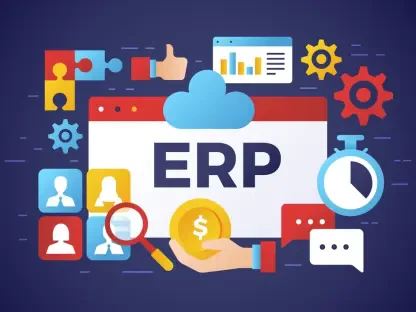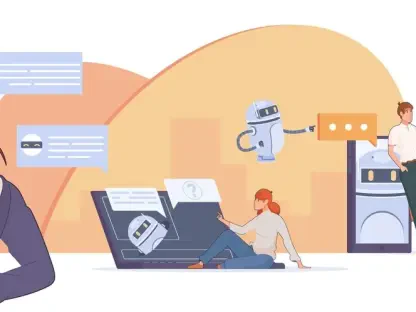The Software as a Service (SaaS) industry is continuously evolving, and one standout trend reshaping the landscape is the adoption of consumption-based billing models. These flexible and customer-focused pricing strategies are transforming how companies operate and engage with their clients. Traditionally, many SaaS businesses relied on flat-rate subscription models. However, the demand for more elasticity and closer alignment of costs with actual usage has made consumption-based billing increasingly popular among both providers and customers.
The Rise of Consumption-Based Billing
Consumption-based billing, also known as usage-based billing, directly ties customer payments to the volume of resources or services used. This method has found a significant following due to its fair approach, making sure customers only pay for what they genuinely use. Leading SaaS companies like Amazon Web Services (AWS), Snowflake, and Algolia have showcased the effectiveness of this model. These companies tailor charges based on various metrics, such as storage, computing power, or search requests, offering a model that grows alongside customer needs.
The rise of consumption-based billing has redefined how businesses think about their revenue systems. By allowing payments to align directly with usage, it ensures a scalable model where costs and revenues move in tandem. This alignment is particularly advantageous for companies experiencing varying levels of demand, as it allows them to manage costs more effectively. Moreover, it makes the pricing process more transparent and fair, which is becoming an increasingly important factor for customers when selecting a service provider.
Advantages of Consumption-Based Billing
One of the primary advantages of consumption-based billing is its ability to scale operations seamlessly. As customer usage escalates, so does the revenue, creating a win-win scenario for the business and the consumer. This scalability ensures that the company can grow without the financial strain that often accompanies rapid expansion. Additionally, this flexibility makes it easier to attract new customers who prefer not to commit to long-term contracts or fixed fees for services they might not fully utilize.
Enhanced prediction of revenue streams is another benefit. By leveraging real-time usage metrics, SaaS firms can gain insights into customer behavior and make more accurate forecasts, unlike the static projections from flat-rate models. Real-time data allows companies to adjust their strategies promptly, minimizing waste and optimizing resource allocation. This ability to forecast accurately provides a more stable financial landscape for the business, making it easier to plan for future growth and investment.
Customer Satisfaction and Trust
Aligning costs with actual usage fosters transparency and trust, enhancing customer satisfaction. This flexibility often attracts new customers who might hesitate to commit to rigid subscription plans, thereby expanding the business’s user base. When customers feel that they are only paying for what they use, they are more likely to remain loyal to the service provider. This customer-focused approach not only boosts satisfaction but also helps in retaining existing customers by meeting their evolving needs.
However, managing a consumption-based model is not without its challenges. Accurate metering for usage tracking, applying precise rates, and ensuring error-free invoicing requires sophisticated billing systems and dedicated software. These systems need to be robust and capable of handling large volumes of data in real time. Investing in advanced technological solutions to manage these tasks efficiently is crucial for the successful implementation of a consumption-based model.
Challenges and Complexities
One of the complexities involves handling overage charges. It’s crucial to manage these transparently to avoid confusion or disputes, ensuring customers understand exactly what they are being billed for. Clear communication and transparent billing practices are essential to maintain customer trust. SaaS companies need to be proactive in communicating with customers, providing detailed reports and explanations of any additional charges incurred.
Fluctuating usage patterns can make revenue forecasting tricky. Nonetheless, by monitoring usage trends closely, businesses can mitigate operational instability and plan better for demand fluctuations. Advanced analytics tools can help in predicting usage patterns and identifying trends that can influence future demand. By implementing these tools, companies can achieve better control over their operations, ensuring they are well-prepared for any changes in customer behavior.
Types of Consumption-Based Pricing Models
Pay-As-You-Go Model
The pay-as-you-go model is straightforward and widely favored. Customers are billed purely based on their actual usage, providing maximum flexibility with no upfront commitments. This model is particularly appealing to small and medium-sized businesses that need to manage their budgets carefully. It allows them to scale their usage up or down based on their current needs, without worrying about fixed fees or long-term contracts.
Volume-Based Discounts
Volume-based discounts lower the per-unit cost as usage increases. This incentivizes customers to scale their usage over time, commonly seen in telecommunications and large-scale SaaS applications. This model benefits both the provider and the customer, as it encourages higher consumption while providing cost savings. It also helps in establishing long-term relationships with customers, as they are more likely to stay with a provider that offers financial incentives for increased usage.
Usage-Based Tiers and Hybrid Models
Usage-based tiers combine flat-rate pricing for predefined usage ranges with additional charges for exceeding those limits. This method blends predictability with flexibility, offering customers a balance between stable costs and the ability to pay for extra usage when needed. Hybrid models take it a step further by combining various elements of pricing structures, adapting to diverse customer requirements and mixing basic feature pricing with premium service charges on a pay-as-you-go basis. These hybrid models provide the best of both worlds, catering to a wide range of customer needs and preferences.
Best Practices for Implementation
For a smooth implementation of consumption-based billing, SaaS companies need to adopt a customer-oriented pricing strategy. Offering transparency and flexibility in pricing can attract and retain a broad user base. It’s essential to understand the specific needs and preferences of customers and design pricing models that cater to those needs. Providing clear and detailed information about pricing structures, usage, and billing practices helps to build trust and foster long-term relationships with customers.
Automated billing processes are essential for reducing errors and administrative burdens. Employing specialized subscription billing software can handle the complexity of real-time usage tracking and invoicing. Automation ensures accuracy and efficiency, allowing companies to focus on other critical aspects of their business. Investing in reliable billing systems and regularly updating them to meet changing demands and technological advancements is crucial for the successful implementation of consumption-based billing.
Transparent Communication and Revenue Insights
Providing customers with real-time dashboards enhances transparency. Clear visibility into their usage fosters trust and can lead to more open communication between the provider and the customer. When customers have access to detailed information about their usage and costs, they can make informed decisions about their consumption patterns. This transparency not only improves customer satisfaction but also helps in identifying areas for improvement and optimization.
Predicting revenue streams by closely monitoring customer usage patterns allows businesses to make informed decisions. These insights help in planning for growth and adapting to changes in demand. Companies can use advanced analytics tools to analyze usage data and identify trends and patterns that influence revenue. By leveraging these insights, businesses can develop more effective strategies for growth and ensure they are well-prepared for future challenges.
Upsell Opportunities and Customer Retention
The Software as a Service (SaaS) sector is in a state of constant change, and a significant trend that’s reshaping the industry is the shift towards consumption-based billing models. These adaptable and customer-centric pricing strategies are altering the ways companies conduct business and interact with their clientele. In the past, many SaaS firms depended on flat-rate subscription plans, which charged customers a fixed amount regardless of their usage. These models provided predictability but lacked flexibility for users whose needs fluctuated.
Today, there’s a growing demand for pricing structures that are more adaptable and better align costs with actual usage. As a result, consumption-based billing has emerged as a popular alternative. This model charges customers based on the amount of service or resources they use, offering a more tailored and fair pricing system. Customers appreciate the transparency and fairness, as they only pay for what they use rather than a predetermined fee.
Providers also benefit from this model as it encourages them to ensure their services are utilized efficiently, fostering stronger customer relationships and loyalty. Ultimately, consumption-based billing models provide a win-win situation, allowing SaaS companies to be more competitive and responsive to the needs of their users. This trend is expected to continue influencing pricing strategies in the SaaS industry, driving innovation and customer satisfaction.









